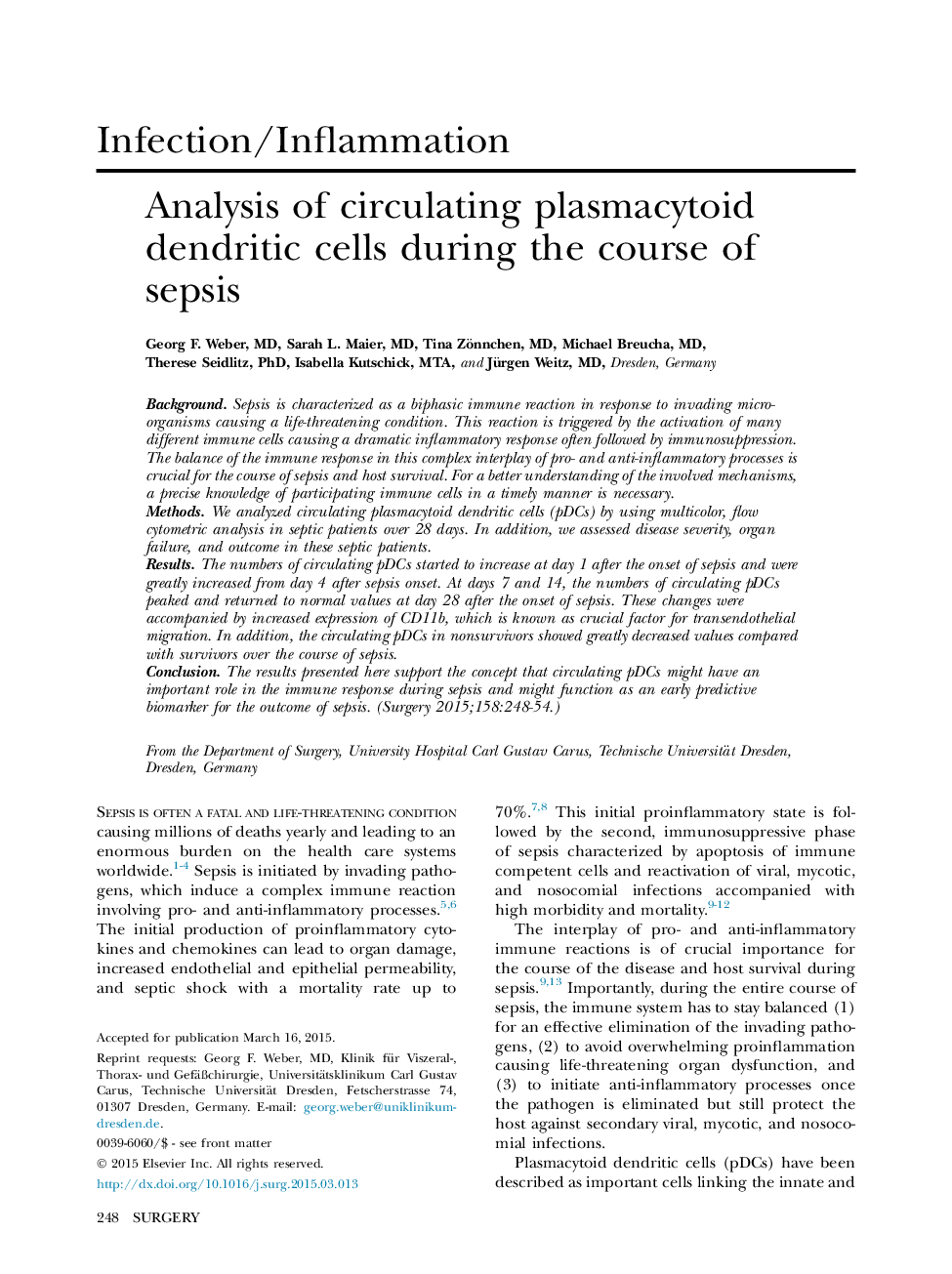| Article ID | Journal | Published Year | Pages | File Type |
|---|---|---|---|---|
| 6255341 | Surgery | 2015 | 7 Pages |
BackgroundSepsis is characterized as a biphasic immune reaction in response to invading micro-organisms causing a life-threatening condition. This reaction is triggered by the activation of many different immune cells causing a dramatic inflammatory response often followed by immunosuppression. The balance of the immune response in this complex interplay of pro- and anti-inflammatory processes is crucial for the course of sepsis and host survival. For a better understanding of the involved mechanisms, a precise knowledge of participating immune cells in a timely manner is necessary.MethodsWe analyzed circulating plasmacytoid dendritic cells (pDCs) by using multicolor, flow cytometric analysis in septic patients over 28 days. In addition, we assessed disease severity, organ failure, and outcome in these septic patients.ResultsThe numbers of circulating pDCs started to increase at day 1 after the onset of sepsis and were greatly increased from day 4 after sepsis onset. At days 7 and 14, the numbers of circulating pDCs peaked and returned to normal values at day 28 after the onset of sepsis. These changes were accompanied by increased expression of CD11b, which is known as crucial factor for transendothelial migration. In addition, the circulating pDCs in nonsurvivors showed greatly decreased values compared with survivors over the course of sepsis.ConclusionThe results presented here support the concept that circulating pDCs might have an important role in the immune response during sepsis and might function as an early predictive biomarker for the outcome of sepsis.
